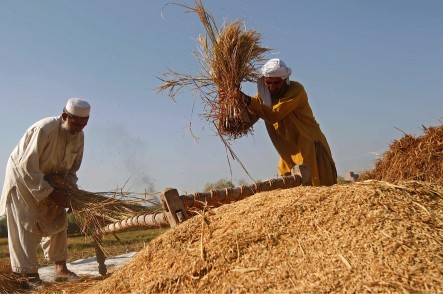Panic would be an understatement. Land values and home prices were down 50%, key financial prices hit 25% in a single day, and banks began to foreclose on heavily mortgaged properties.
The financial crisis of 2008? No, in fact we’re talking about the first modern financial crisis to hit the United States, way back in 1818-1819. If we’re lucky, that difficult period could provide a blueprint for how to pull out of the nose-dive that looks increasingly likely to be the trajectory of the Afghanistan economy after 2014.
The early financial history of the United States reads like a playbook of things to avoid: an experimental central bank with almost no accountability, regional banks with even less oversight of their own back-room currency printing presses, and an easy credit mentality driven by the new national pastime of Western expansionism. This heady mix of credit and confidence exacerbated a boom and bust cycle that would last until well after the American Civil War.
Many of these booms and busts in early U.S. history can be attributed to the emergence of the agricultural futures markets in Chicago, the use of leverage in those markets, and the ability of banks to use local harvests as a source of credit in the form of new loans without centralized control. This newly created credit exacerbated price volatility around harvest times, which was made even worse by leveraged commodity speculation. The frequent outcome was widespread bank failure.
As complex and obscure as this picture seems, it does offer one gem of an idea with direct applicability to Afghanistan: the use of agriculture as a source of credit and as a way to increase food security locally.
Afghanistan’s economy is largely dependent on agriculture and so its economic output often swings wildly year-to-year. What is perhaps less quantifiable but no less important is the emotional impact those swings have not just on economic output but on the stark choices faced by Afghan families when times are very bad and the limited opportunities available when times are good.
One possible solution aimed at reducing uncertainty is to establish a new system of agricultural districts across the country. Within these districts nationally owned grain storage facilities could be built to secure and audit locally grown yet farmer-owned staple crops. Each large district, ultimately as many as 10 or 12 across the country, would give farmers low-cost storage, could link individual identification of what they own to the national ID card in development, and might offer the capacity to either sell a portion of their crops to government-sponsored programs or save for future shortages to feed their own families. It’s the farmer’s asset and their choice.
Most importantly, the central bank of Afghanistan under its mandate to promote sustainable economic growth could issue a new type of regional currency backed by the value of the grain in storage. This new currency would not replace the existing Afghani and would be issued only in small bills, be legal only in that agricultural district, be issued with an expiration date, and be supplied directly to the farmer in some fractional amount to what they leave on store. (The Diplomat)
The financial crisis of 2008? No, in fact we’re talking about the first modern financial crisis to hit the United States, way back in 1818-1819. If we’re lucky, that difficult period could provide a blueprint for how to pull out of the nose-dive that looks increasingly likely to be the trajectory of the Afghanistan economy after 2014.
The early financial history of the United States reads like a playbook of things to avoid: an experimental central bank with almost no accountability, regional banks with even less oversight of their own back-room currency printing presses, and an easy credit mentality driven by the new national pastime of Western expansionism. This heady mix of credit and confidence exacerbated a boom and bust cycle that would last until well after the American Civil War.
Many of these booms and busts in early U.S. history can be attributed to the emergence of the agricultural futures markets in Chicago, the use of leverage in those markets, and the ability of banks to use local harvests as a source of credit in the form of new loans without centralized control. This newly created credit exacerbated price volatility around harvest times, which was made even worse by leveraged commodity speculation. The frequent outcome was widespread bank failure.
As complex and obscure as this picture seems, it does offer one gem of an idea with direct applicability to Afghanistan: the use of agriculture as a source of credit and as a way to increase food security locally.
Afghanistan’s economy is largely dependent on agriculture and so its economic output often swings wildly year-to-year. What is perhaps less quantifiable but no less important is the emotional impact those swings have not just on economic output but on the stark choices faced by Afghan families when times are very bad and the limited opportunities available when times are good.
One possible solution aimed at reducing uncertainty is to establish a new system of agricultural districts across the country. Within these districts nationally owned grain storage facilities could be built to secure and audit locally grown yet farmer-owned staple crops. Each large district, ultimately as many as 10 or 12 across the country, would give farmers low-cost storage, could link individual identification of what they own to the national ID card in development, and might offer the capacity to either sell a portion of their crops to government-sponsored programs or save for future shortages to feed their own families. It’s the farmer’s asset and their choice.
Most importantly, the central bank of Afghanistan under its mandate to promote sustainable economic growth could issue a new type of regional currency backed by the value of the grain in storage. This new currency would not replace the existing Afghani and would be issued only in small bills, be legal only in that agricultural district, be issued with an expiration date, and be supplied directly to the farmer in some fractional amount to what they leave on store. (The Diplomat)
Source : Afghan Voice Agency (AVA), International Service







